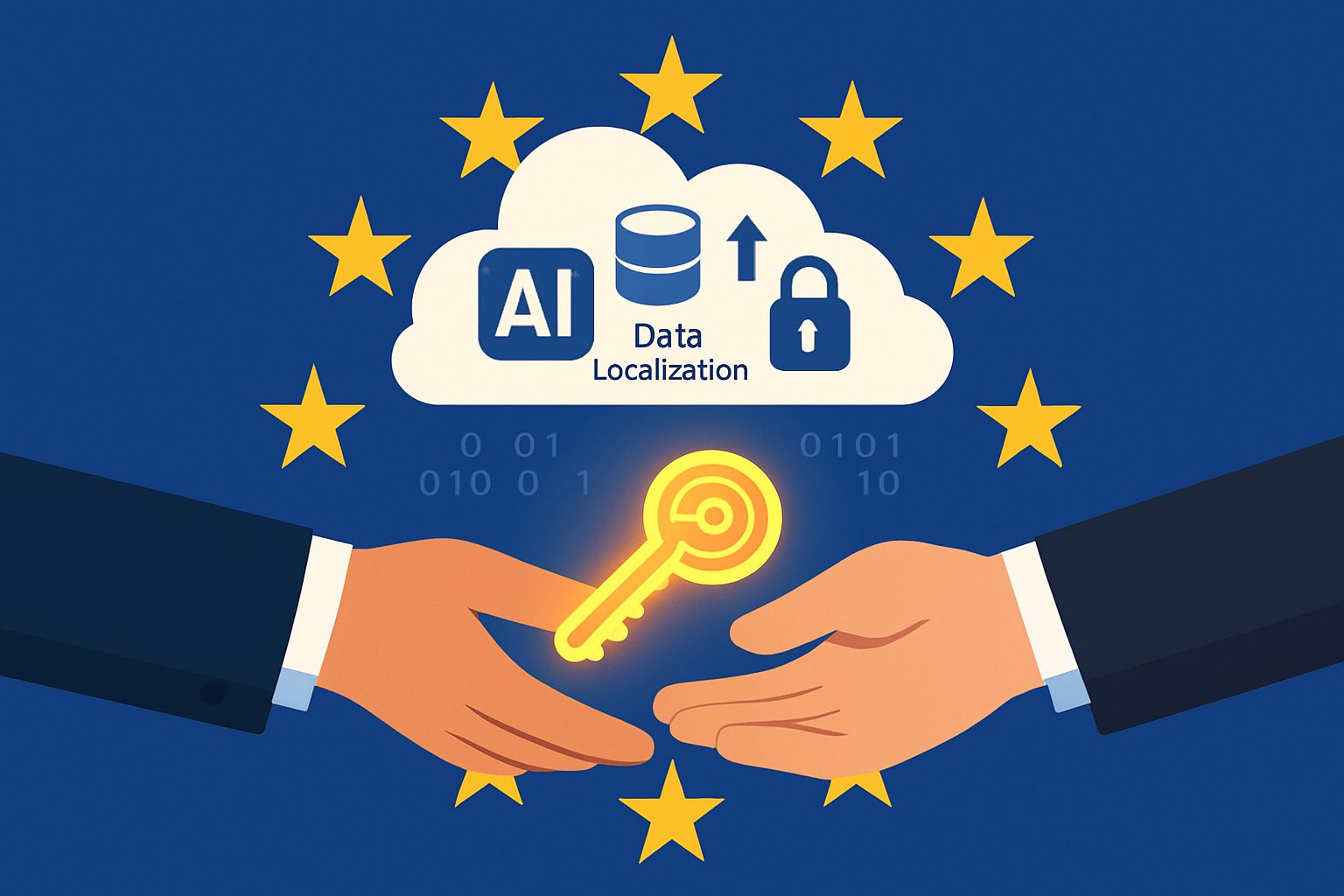
AI CERTs
12 hours ago
AI Data Localization reshapes Microsoft’s EU cloud
European regulators keep tightening data rules. Consequently, Microsoft has intensified its focus on AI Data Localization. The company’s latest sovereignty package layers in-country AI processing onto its existing EU Data Boundary. Moreover, the move arrives amid fierce debate over cross-border access laws and mounting pressure for EU AI sovereignty.
Businesses want clarity. However, sovereignty advocates doubt that geography alone can block extraterritorial orders. This article unpacks Microsoft’s strategy, the surrounding legal tension, and the practical implications for enterprises pursuing AI privacy compliance.

Microsoft Sovereignty Push
Microsoft finished Phase 3 of its EU Data Boundary in February 2025. Therefore, core cloud, support, and professional-services data for EU and EFTA customers now remains inside European infrastructure unless clients choose otherwise.
Subsequently, the firm announced in-country processing for Microsoft 365 Copilot interactions across fifteen nations. Australia, India, Japan, and the United Kingdom receive coverage by year-end 2025. Eleven more, including Germany, Italy, Spain, Sweden, Switzerland, Canada, the UAE, and the U.S., follow during 2026. Paul Lorimer explained, “Copilot interactions are processed, under normal operations, in data centers located within a nation’s borders.”
Meanwhile, investments exceed $20 billion across Europe, with datacenter capacity set to rise 40% over two years. Additionally, Microsoft introduced Sovereign Landing Zones, Azure Local scale upgrades, and customer-controlled key services.
These milestones underline Microsoft’s commitment. Nevertheless, legal critics remain unconvinced.
Key progress strengthens regional infrastructure. However, the next section explores rising regulatory pressure.
Regulatory Pressure Grows
French senators grilled Microsoft in mid-2025. During testimony, the firm admitted it “cannot guarantee” French data will never reach U.S. authorities. Consequently, European lawmakers submitted formal questions on sovereignty gaps.
In contrast, industry analysts such as Gartner’s Nader Henein view local processing as adding regulatory protection while reducing latency. Furthermore, many governments now include in-region processing clauses within procurement frameworks.
Across the Atlantic, the U.S. CLOUD Act still looms. Therefore, any U.S. cloud provider remains vulnerable to foreign orders. Privacy NGOs argue that residency without independent legal control provides only partial defense.
Regulators demand stronger assurances. Consequently, Microsoft highlights technical controls to bolster its promises.
Political scrutiny is intensifying. Meanwhile, enterprises search for tangible safeguards, discussed next.
Technical Controls Explained
Microsoft combines geography with layered security. Firstly, Azure Confidential Computing encrypts data while in use. Hardware-based trusted execution environments seal workloads from cloud operators and insiders.
Secondly, customer-managed keys empower clients to hold cryptographic control. Administrative lockbox workflows ensure staff cannot access content without explicit, logged approval.
Thirdly, Sovereign Landing Zones provide reference architectures aligned to regional compliance baselines. Consequently, deployment becomes quicker while meeting local regulations.
The company also touts its AI + Security Compliance Certification program, guiding architects through best practices for cross-border data governance.
These controls offer measurable risk reduction. Nevertheless, critics warn that legal jurisdiction can override encryption through compelled key disclosure.
Layered technology improves defense. However, organizations also weigh performance and cost benefits, covered below.
Benefits For Enterprises
Organizations adopting Microsoft’s sovereignty toolkit report multiple gains:
- Lower latency for AI chat and analysis, improving user experience.
- Simpler audits for AI privacy compliance under GDPR and sector rules.
- Stronger positioning in government tenders requiring AI Data Localization.
- Reduced exposure to multi-region routing failures, enhancing resilience.
Moreover, the hyperscaler’s investment scale means features arrive without major re-platforming. Consequently, enterprises avoid disrupting existing application stacks.
However, costs can rise when isolating workloads. Additionally, smaller regional clouds argue they offer deeper sovereignty rooted in domestic law.
Advantages appear substantial for many stakeholders. Nevertheless, the sovereignty debate persists, examined next.
Sovereignty Debate Continues
Market concentration shapes the narrative. Canalys reports the three largest hyperscalers command roughly two-thirds of global share. Therefore, few alternatives match their AI innovation pace.
Nevertheless, European providers such as OVHcloud state that residency differs from sovereignty. They argue only local ownership or strict client-held keys guarantee independence from foreign law.
Meanwhile, policymakers balance digital competitiveness against strategic autonomy. Some propose “trusted partner” models combining local oversight with global cloud scale.
Opinions remain polarized. Consequently, enterprises must assess legal exposure, technological depth, and operational practicality.
The controversy endures, yet concrete roadmaps can guide next steps.
Roadmap And Recommendations
Organizations should adopt a structured approach:
- Map data classes against residency and AI privacy compliance obligations.
- Enable in-country Copilot routing once available.
- Activate confidential compute for sensitive inference workloads.
- Manage keys externally and enforce lockbox approval.
- Monitor legislative changes on EU AI sovereignty and cross-border data governance.
Furthermore, enterprises can validate controls through penetration tests and independent audits. Subsequently, teams may pursue the AI + Security Compliance Certification to strengthen internal expertise.
These actions create a defensible compliance posture. However, continuous review remains vital as laws and threats evolve.
Practical steps mitigate immediate risk. Consequently, the conclusion distills the broader implications.
Key Takeaways And Outlook
AI Data Localization has become a strategic imperative. Microsoft’s expanded capabilities deliver real performance and compliance gains. Moreover, confidential compute, customer keys, and in-country routing form a robust defense stack.
Nevertheless, extraterritorial law still challenges absolute EU AI sovereignty. Therefore, enterprises must blend technical controls with vigilant legal review. Industry momentum suggests localization will keep spreading, yet policy debates will intensify.
These trends shape the European digital landscape. However, proactive organizations can harness the benefits while managing the residual risk.
Staying informed enables confident cloud adoption. Consequently, readers should explore certifications and continuously monitor evolving regulations.



